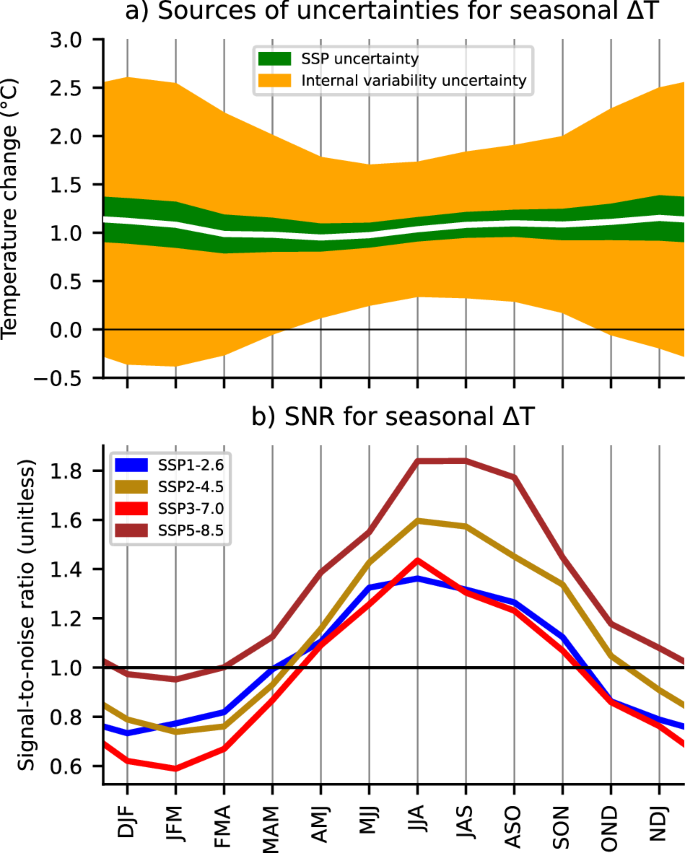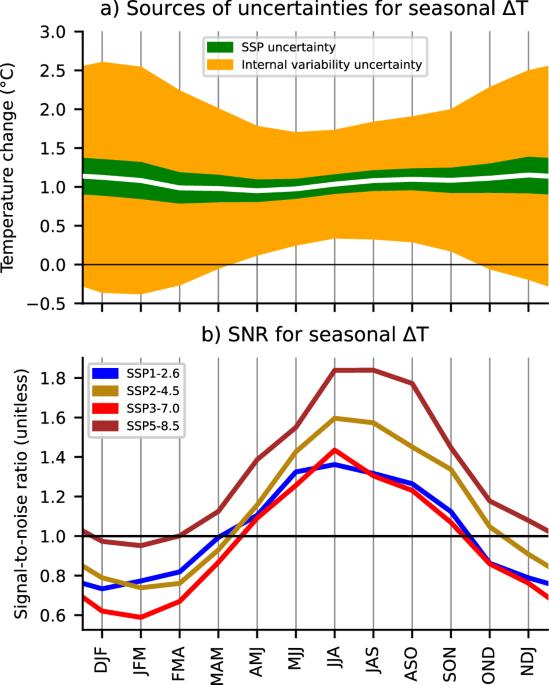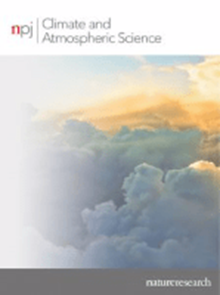通过内部变异故事情节评估北欧近期人为变暖和湿润的调节作用
IF 8.5
1区 地球科学
Q1 METEOROLOGY & ATMOSPHERIC SCIENCES
引用次数: 0
摘要
气候系统固有的混乱性质所产生的内部变异放大或掩盖了人为因素造成的变化,尤其是在对气候变异影响最大的外热带地区的区域范围内。几乎可以肯定的是,这种情况在短期内还将继续。在此,我们将重点放在北欧地区,该地区的变率主要由北大西洋涛动(NAO)和大西洋经向翻转环流(AMOC)通过远程动力学和热力学过程控制,并引入内部变率故事情节(IVS)的概念,以探索、理解和量化内部变率的两个综合驱动因素在调制 2040 年冬季人为变暖中的作用。基于大量的历史情景模拟,我们表明,高影响IVS的特点是AMOC微弱下降和NAO向主导正相的十年期转变,它能更快地导致气候变暖,而不受实际和未来温室气体排放的影响。与此相反,AMOC 下降幅度增大和更频繁地出现负 NAO 会在短期内大大抑制气候变暖和变湿。在后一种IVS中,我们提供的证据表明,到2040年,与2010年类似的冬季恶劣天气仍有可能发生,而2010年的冬季恶劣天气曾造成广泛的社会经济混乱。通过 IVS 棱镜,以条件形式将不确定的气候结果重构到物理科学空间,使气候信息与准确的风险评估和适应规划相关联。本文章由计算机程序翻译,如有差异,请以英文原文为准。


Modulation of Northern Europe near-term anthropogenic warming and wettening assessed through internal variability storylines
Internal variability arising from the inherently chaotic nature of the climate system has amplified or obscured human-caused changes, especially at regional scales in the extratropics, where its contribution to climate variability is the largest. It is virtually certain that this will continue in the near-term. We here focus on the Northern Europe region, whose variability is largely controlled by the North Atlantic Oscillation (NAO) and the Atlantic Meridional Overturning Circulation (AMOC) through remote dynamical and thermodynamic processes, and introduce the concept of internal variability storylines (IVS) to explore, understand, and quantify the role of the two combined drivers of internal variability in the modulation of the anthropogenic warming by 2040 in winter. Based on a large ensemble of historical-scenario simulations, we show that the high-impact IVS, characterised by weak AMOC decline and a decadal shift of the NAO toward dominant positive phase, leads faster to warmer-wetter conditions independently of actual and future greenhouse gases emissions. By contrast, amplified AMOC reduction and more recurrent negative NAO can considerably damp both warming and wettening at near-term. In the latter IVS, we provide evidence that winter-severe conditions similar to those in 2010, that had been responsible for widespread socio-economic disruptions, remain almost as likely to occur by 2040. Reframing the uncertain climate outcomes into the physical science space in a conditional form through the prism of IVS makes climate information relevant for accurate risk assessments and adaptation planning.
求助全文
通过发布文献求助,成功后即可免费获取论文全文。
去求助
来源期刊

npj Climate and Atmospheric Science
Earth and Planetary Sciences-Atmospheric Science
CiteScore
8.80
自引率
3.30%
发文量
87
审稿时长
21 weeks
期刊介绍:
npj Climate and Atmospheric Science is an open-access journal encompassing the relevant physical, chemical, and biological aspects of atmospheric and climate science. The journal places particular emphasis on regional studies that unveil new insights into specific localities, including examinations of local atmospheric composition, such as aerosols.
The range of topics covered by the journal includes climate dynamics, climate variability, weather and climate prediction, climate change, ocean dynamics, weather extremes, air pollution, atmospheric chemistry (including aerosols), the hydrological cycle, and atmosphere–ocean and atmosphere–land interactions. The journal welcomes studies employing a diverse array of methods, including numerical and statistical modeling, the development and application of in situ observational techniques, remote sensing, and the development or evaluation of new reanalyses.
 求助内容:
求助内容: 应助结果提醒方式:
应助结果提醒方式:


